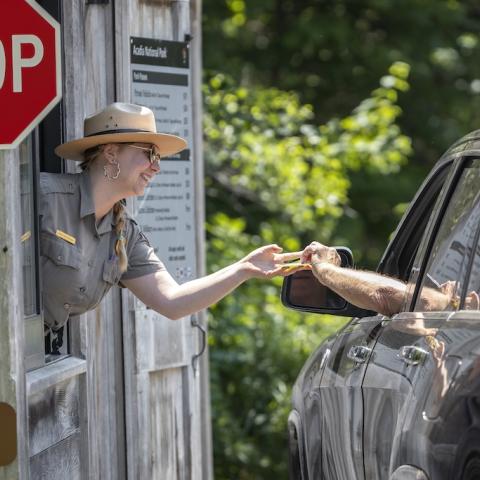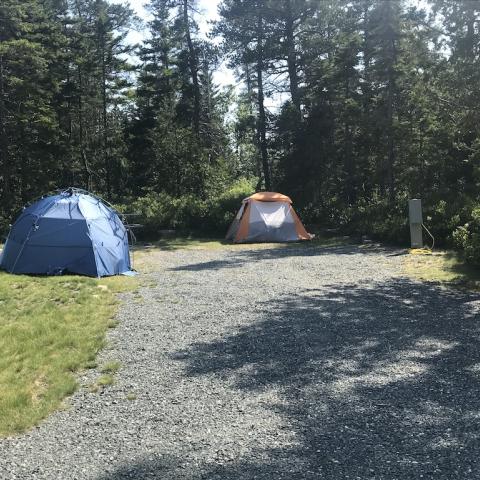
Among the many wildflowers you might spot in Acadia National Park this spring are rhodora, shadbush, and marsh marigold/Friends of Acadia, Aimee Beal Church, top and middle; Friends of Acadia, Stephanie Clement, bottom
Spring is a wonderful time to visit Acadia National Park. You’ll find empty parking spots at Acadia’s top destinations, “vacancy” signs at your favorite lodgings, and a more relaxed feel in and around the park as it gears up for the busier seasons of summer and fall.
At the same time, the staff at Friends of Acadia notes that the spring “shoulder season” is more active than it used to be, and you’ll find most local businesses open in May or even April. The Park Loop Road typically opens April 15 (but if you’re a biking enthusiast you may want to visit earlier, weather permitting, to experience the Loop Road motor-free!).
Still, it’s always a good time to be a savvy Acadia visitor. Avoid Cadillac Mountain crowds at sunrise and sunset by picking a new place or new way to experience these magical moments—watch sunrise along Ocean Drive or take a sunset boat ride. Don’t miss Acadia at night! Seek out a full moon over Sand Beach, shooting stars over Cadillac Mountain, or owl calls echoing into the stillness of a forest trail.
Do your favorite things at new times of the day: visit Acadia early morning or late afternoon to find less-crowded experiences. See Acadia in new ways: from a boat, on an outer island, or at a place new to you. And always visit Acadia with a backup plan. If a parking lot or area is full when you arrive, pick a new destination and protect the park by not adding to congestion.
While you’re in the park, be on the lookout for some special spring visitors. Blooming flowers and migrating songbirds make Acadia extra-beautiful this time of year. A great place to see both is at the Wild Gardens of Acadia. Created and maintained by volunteers, the Gardens showcase more than 400 native plant species arranged into 12 typical Acadia habitats.
Depending on when you’re there, you might see marsh marigold, wood anemone, nodding trillium, jack-in-the-pulpit, lady’s slipper, or other lovely natives in bloom.
You may well hear a common yellowthroat or black-throated green warbler singing from the bushes; by mid-May more than a dozen warblers have made their way to Acadia. Or come to Acadia early—in March there’s still a chance of snowy owl sightings on Acadia’s tundra-like mountaintops.




 Support Essential Coverage of Essential Places
Support Essential Coverage of Essential Places







Comments
And for even more details about visiting Acadia in springtime, including links to year-round lodging and restaurants and hours for the visitor center, check out our recent blog post on the Bangor Daily News Web site: http://acadiaonmymind.bangordailynews.com/2017/03/18/home/hope-springs-e...